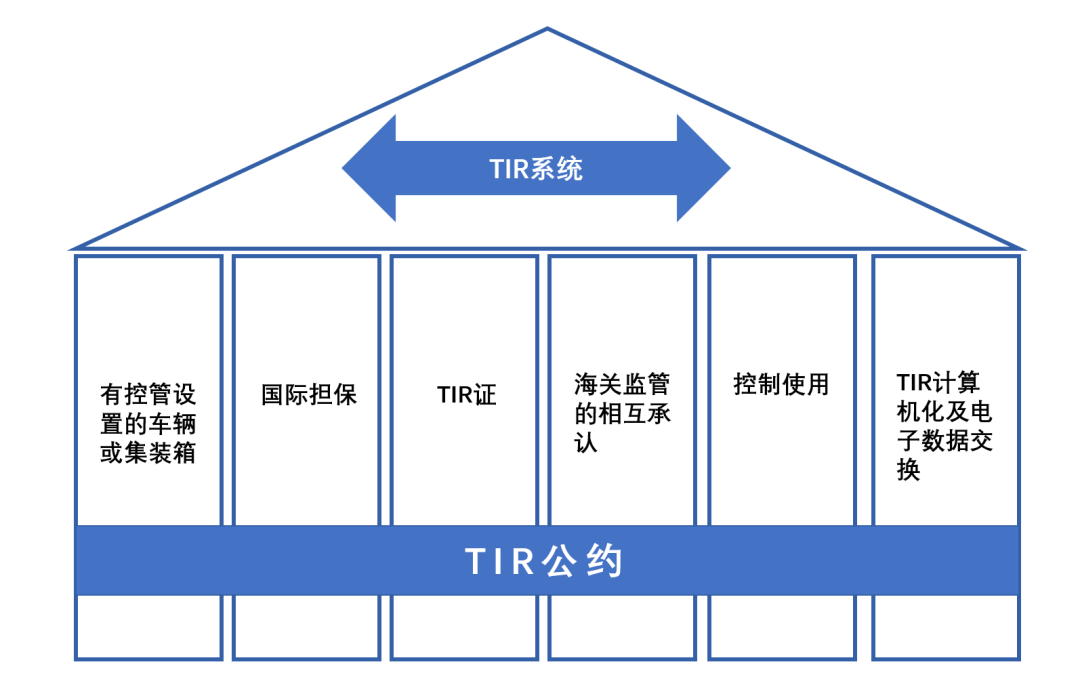The TIR (Transport International Routiers) system, also known as the International Road Transport Convention, is an international agreement initiated by the United Nations Economic Commission for Europe (ECE) aimed at simplifying cross-border road transport clearance procedures, improving clearance efficiency, and enhancing the safety of international road transport. On July 5, 2016, China joined the Convention on International Road Transport (TIR Convention), becoming the 70th contracting party.
The TIR system has six pillars: controlled vehicles or containers, international guarantees, TIR certificates, mutual recognition of customs supervision, controlled use, TIR computerization, and electronic data exchange.
Vehicles or containers with control settings
Under the TIR system, all vehicles and containers involved in transportation must comply with internationally recognized standards and undergo strict control. Before driving, the vehicle needs to be sealed by customs; During the transportation of vehicles, due to the need to maintain the integrity of customs seals, it is not possible to remove or load goods at will.
During the international guarantee "TIR" transportation process, if the carrier fails to fulfill its responsibilities, the national guarantee associations of each country will be responsible for bearing the tariffs and taxes that pose risks in transit transportation. When an illegal situation occurs, the customs can demand payment of customs taxes and fees from the domestic transportation association. In China, the China Road Transport Association is the issuing guarantee association for TIR certificates, providing a customs guarantee of 100000 euros for each TIR certificate.
The TIR certificate is a legal proof document that the goods transported in the TIR system have the above-mentioned "international guarantee", and is an important document used by all parties involved in the transportation process to verify and confirm the legality of the goods.
Mutual recognition of customs supervision: The customs inspection results of the country of origin and the seals imposed are recognized by the customs of both the transit country and the destination country, without the need for repeated inspections.
Firstly, enterprises entering the TIR system must meet the corresponding qualifications and obtain the corresponding qualifications; Secondly, the issuance of TIR certificates requires the authorization of a national guarantee association by the customs. The China Road Transport Association is the only legitimate TIR certificate issuing organization authorized by the General Administration of Customs of China; Finally, during the actual transportation process, relevant agencies and customs departments will monitor the use of TIR documents by transporters to ensure compliance with the regulations and requirements of the TIR system.
The TIR computerization and electronic data exchange SafeTIR system is an electronic information system designed by IRU to enhance the efficiency, safety, and transparency of cargo transportation under the TIR system. It ensures the traceability of the transportation process through real-time electronic confirmation and unilateral data confirmation by customs, and enables customs of various countries to view and supervise the transportation situation at any time.
